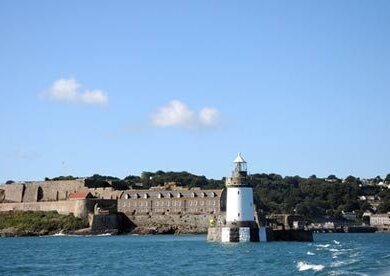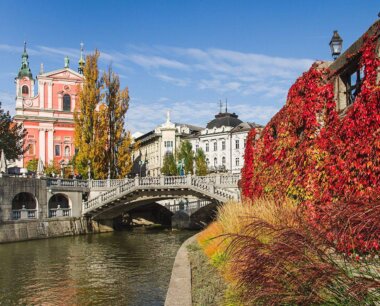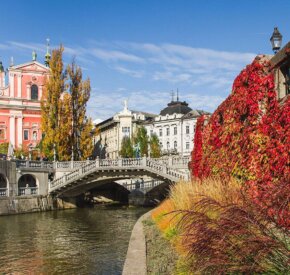
Short break in Guernsey
It may only be small but Guernsey in the Channel Islands punches well above its weight in culture, history and landscapes, a shining gem in Britain’s crown
The identically dressed young men checking in for a flight to Jersey at Guernsey’s airport looked despondent. You didn’t need to be Sherlock Holmes to deduce that Jersey’s football team must have lost in the annual Muratti match against Guernsey.
The rivalry between Guernsey and Jersey runs deep and goes back centuries. In the English Civil War, Jersey was Royalist, Guernsey Parliamentarian (with the exception of a Royalist stronghold in the island’s Castle Cornet). On Guernsey they call the natives of Jersey ‘crapaud’ – toads – while they, in turn, are known as ‘anes’ – donkeys.
While the Channel Islands are British Crown dependencies, they are fiercely independent and proud of the differences between each other. Guernsey is nearer to France than to England, and the original language spoken here was a Norman-French patois, known as Guernesiais. Only a small number speak it today, with English being the official language since the early 20th century.
The island is shaped like a wedge of cheese, appropriate given its rich dairy products, produced from the Guernsey cows with soulful eyes. The golden-coloured Guernsey goats are not as well known, but they too produce a goat’s cheese, and I spotted a small group in a field, before heading around the 43-mile circumference of the island, with cliffs and coves in the south and east, long sweeps of sand along the windy west coast, and a low-lying northern parish with sand dunes.
Thanks to Guernsey’s infamous financial industry, the English language and culture has become dominant. The plane from Gatwick was busy with business commuters, and the cars on the island were more likely to be flash than old bangers.
This despite the fact that the roads are narrow and the speed limit low; 35mph on most roads, down to 15mph on Ruette Tranquilles – quiet lanes where priority is given to walkers, cyclists and horse-riders.
After finance, tourism is the most important industry, attracting those looking for somewhere like an England of several decades ago. It’s clean and safe, with an honesty system in practise if you want to buy the fresh produce for sale by the roadside.
Some come out of a fascination with the island’s occupation by Germany during the Second World War. Traces abound, from the fortifications that ring the coast to the museums.
But it’s surprising that Guernsey isn’t better known as a short break destination, as it has all the right ingredients. St Peter Port, the capital, is an attractive and very walkable harbour town, with museums, restaurants and shops, if a lack of wild nightlife.
The 27 beaches are mostly sandy, the climate is mild, the sea a startling turquoise-blue. Fishermen bring in a local catch that includes scallops, sea bass, lobster and crab. In a weekend here, you can enjoy some walking or kayaking, mix it with a dose of history and culture, and enjoy some excellent food and accommodation.
Day 1 – Explore the history
Explore the harbour and atmospheric backstreets of St Peter Port. Victor Hugo lived on the island for 15 years, and put the _inishing touches to Les Miserables here. The Victor Hugo Museum is in his former home, Hauteville House, a flamboyant and extraordinary masterpiece in itself. You have to take an hour-long guided tour, and it is safest to pre-book (hugohouse@cwgsy.net). Walking to it, you will most likely pass the house of his mistress, Juliette, just down the street.
A statue of Hugo dominates Candie Gardens, which is also home to the Guernsey Museum and Art Gallery. More museums are to be found in Castle Cornet on the harbour, and a Noon Day Gun is _ired by soldiers in 19th century costume. Over in College Street, The Guernsey Tapestry is an original introduction to the island’s history.
Jump on a bus or take a guided tour to see some of the other sites. Little Chapel really is tiny, possibly the smallest consecrated chapel in the world. However, the other reason it attracts visitors is that it is made entirely from shells and broken pottery.
For an insight into Guernsey under the German Occupation visit The German Military Underground Hospital, hewn out of rock, or The German Occupation Museum (see Day Three). Back in St Peter’s Port visit the La Vallette Underground Military Museum.
Watch the sun go down over the sandy west coast beaches from the terrace of Vistas beach cafe or Cobo Bay Restaurant.
Day 2 – Get active!
After the rich dairy products and fine food, you’ll need to burn off some calories. There are fine cliff walks from St Peter Port and further along. If you are really keen, it is possible to walk the whole circumference of the island, all 43 miles. However, if you get tired at any point, you can hop on one of the frequent buses that ply the coast.
If you like the thought of a good lunch at the end of your walk, head along the cliffs from St Peter Port to Fermain Bay for an al fresco lunch at the Fermain Beach Cafe. It’s a steep walk up and down but you’ll forgive that for the chocolate cake and the views.
A walking map of Guernsey, as well as various guides, is available from the information office in St Peter Port. It’s easy to arrange guided walks too: Gill Girard (gillgirardtourguide.com) is a highly recommended accredited tour guide who offers anything from a walk around the historical streets of St Peter Port to an all-day cliff walk. Or find other guides, whether for walking or sightseeing, at www.guernseyguidedtours.com.
Guernsey’s cliffs are perfect for exploring in a kayak or by coasteering – traversing the coastline through a mix of scrambling, jumping and swimming. Outdoor Guernsey offer both activities, including a 3.5 hour combo, mostly from the gorgeous Petit Bot bay. No experience is necessary and you don’t have to be brave either! www.outdoorguernsey.co.uk
Day 3 – Take to the water
Head for cute little Herm Island just a 20-minute ferry ride away. The island is car-free and has just 65 residents. Have a picnic on one of the beaches, or take lunch at the Mermaid Tavern (the fish finger sandwiches are renowned!). Take a stroll up to the little church, and then carry on to the other side of the island and the dazzling white Shell Beach or its lovely neighbour, Belvoir Beach, both set off by glittering, clear seas, worthy of the Caribbean.
Alternatively, a slightly longer ferry ride will take you to tranquil Sark, an island of around 600 people, that makes Guernsey seem fast-paced. Like Herm, it has no cars, so hire a bicycle to explore the island. You’ll need to dismount to cross the iconic but windy La Coupee, a narrow isthmus that joins Sark to Little Sark. If you don’t want to pedal, take to a horse-drawn carriage.
Back in St Peter Port do your souvenir shopping; drop into Tapenade Delicatessen (4 North Quay) to stock up on Guernsey cheeses (including the award-winning smoked cheese), fudge and other edible gifts to take back with you.
If you haven’t already visited the gripping German Occupation Museum pop in on your way back to the airport; it’s only 10 minutes walk away. However, do allow a minimum of an hour to do the museum justice, as it is really absorbing.
Essential information
When to go: Year-round. Guernsey tends to have a milder climate than mainland UK.
Getting there: Return flights from London Gatwick to Guernsey (six times a day) with Aurigny (www.aurigny.com / 01481 822886) start at £140 return and take less than an hour. Regional flights available too. Ferries run from several ports on England’s south coast, and also from St Malo and other French ports.
Getting around: There is an excellent bus service, with a flat fare of £2 for any journey, or a day pass for £4.50. If hiring a car, note that the maximum speed limit is 35mph, and the roads are very narrow. Parking is free, but there are disc parking zones where restrictions apply on the length of time you can stay. Alternatively hire a bicycle.
Where to stay: There are few bargains. At the top-end, The Old Government House Hotel (theoghhotel.com) has a surfeit of old-world charm; rates from £198.00 pn. Sister hotel Duke of Richmond (dukeofrichmond.com) is funkier, with rates from £165.00 pn. Best value is the Foresters Arms, with just two rooms (£30 pppn, 01481 724052).
Where to eat: Seafood lovers will have much to be happy about here. Le Nautique has a wide selection as well as a good veggie menu; pricey but substantial portions (lenautiquerestaurant.co.uk). Pier 17 on Albert Pier has good seasonal dishes (pier17restaurant.com).
More info: Visit Guernsey – www.visitguernsey.com
After finance, tourism is the most important industry, attracting those looking for somewhere like an England of several decades ago. It’s clean and safe, with an honesty system in practise if you want to buy the fresh produce for sale by the roadside.
Some come out of a fascination with the island’s occupation by Germany during the Second World War. Traces abound, from the fortifications that ring the coast to the museums.
But it’s surprising that Guernsey isn’t better known as a short break destination, as it has all the right ingredients. St Peter Port, the capital, is an attractive and very walkable harbour town, with museums, restaurants and shops, if a lack of wild nightlife.
The 27 beaches are mostly sandy, the climate is mild, the sea a startling turquoise-blue. Fishermen bring in a local catch that includes scallops, sea bass, lobster and crab. In a weekend here, you can enjoy some walking or kayaking, mix it with a dose of history and culture, and enjoy some excellent food and accommodation.
Day 1 – Explore the history
Explore the harbour and atmospheric backstreets of St Peter Port. Victor Hugo lived on the island for 15 years, and put the _inishing touches to Les Miserables here. The Victor Hugo Museum is in his former home, Hauteville House, a flamboyant and extraordinary masterpiece in itself. You have to take an hour-long guided tour, and it is safest to pre-book (hugohouse@cwgsy.net). Walking to it, you will most likely pass the house of his mistress, Juliette, just down the street.
A statue of Hugo dominates Candie Gardens, which is also home to the Guernsey Museum and Art Gallery. More museums are to be found in Castle Cornet on the harbour, and a Noon Day Gun is _ired by soldiers in 19th century costume. Over in College Street, The Guernsey Tapestry is an original introduction to the island’s history.
Jump on a bus or take a guided tour to see some of the other sites. Little Chapel really is tiny, possibly the smallest consecrated chapel in the world. However, the other reason it attracts visitors is that it is made entirely from shells and broken pottery.
For an insight into Guernsey under the German Occupation visit The German Military Underground Hospital, hewn out of rock, or The German Occupation Museum (see Day Three). Back in St Peter’s Port visit the La Vallette Underground Military Museum.
Watch the sun go down over the sandy west coast beaches from the terrace of Vistas beach cafe or Cobo Bay Restaurant.
Day 2 – Get active!
After the rich dairy products and fine food, you’ll need to burn off some calories. There are fine cliff walks from St Peter Port and further along. If you are really keen, it is possible to walk the whole circumference of the island, all 43 miles. However, if you get tired at any point, you can hop on one of the frequent buses that ply the coast.
If you like the thought of a good lunch at the end of your walk, head along the cliffs from St Peter Port to Fermain Bay for an al fresco lunch at the Fermain Beach Cafe. It’s a steep walk up and down but you’ll forgive that for the chocolate cake and the views.
A walking map of Guernsey, as well as various guides, is available from the information office in St Peter Port. It’s easy to arrange guided walks too: Gill Girard (gillgirardtourguide.com) is a highly recommended accredited tour guide who offers anything from a walk around the historical streets of St Peter Port to an all-day cliff walk. Or find other guides, whether for walking or sightseeing, at www.guernseyguidedtours.com.
Guernsey’s cliffs are perfect for exploring in a kayak or by coasteering – traversing the coastline through a mix of scrambling, jumping and swimming. Outdoor Guernsey offer both activities, including a 3.5 hour combo, mostly from the gorgeous Petit Bot bay. No experience is necessary and you don’t have to be brave either! www.outdoorguernsey.co.uk
Day 3 – Take to the water
Head for cute little Herm Island just a 20-minute ferry ride away. The island is car-free and has just 65 residents. Have a picnic on one of the beaches, or take lunch at the Mermaid Tavern (the fish finger sandwiches are renowned!). Take a stroll up to the little church, and then carry on to the other side of the island and the dazzling white Shell Beach or its lovely neighbour, Belvoir Beach, both set off by glittering, clear seas, worthy of the Caribbean.
Alternatively, a slightly longer ferry ride will take you to tranquil Sark, an island of around 600 people, that makes Guernsey seem fast-paced. Like Herm, it has no cars, so hire a bicycle to explore the island. You’ll need to dismount to cross the iconic but windy La Coupee, a narrow isthmus that joins Sark to Little Sark. If you don’t want to pedal, take to a horse-drawn carriage.
Back in St Peter Port do your souvenir shopping; drop into Tapenade Delicatessen (4 North Quay) to stock up on Guernsey cheeses (including the award-winning smoked cheese), fudge and other edible gifts to take back with you.
If you haven’t already visited the gripping German Occupation Museum pop in on your way back to the airport; it’s only 10 minutes walk away. However, do allow a minimum of an hour to do the museum justice, as it is really absorbing.
Essential information
When to go: Year-round. Guernsey tends to have a milder climate than mainland UK.
Getting there: Return flights from London Gatwick to Guernsey (six times a day) with Aurigny (www.aurigny.com / 01481 822886) start at £140 return and take less than an hour. Regional flights available too. Ferries run from several ports on England’s south coast, and also from St Malo and other French ports.
Getting around: There is an excellent bus service, with a flat fare of £2 for any journey, or a day pass for £4.50. If hiring a car, note that the maximum speed limit is 35mph, and the roads are very narrow. Parking is free, but there are disc parking zones where restrictions apply on the length of time you can stay. Alternatively hire a bicycle.
Where to stay: There are few bargains. At the top-end, The Old Government House Hotel (theoghhotel.com) has a surfeit of old-world charm; rates from £198.00 pn. Sister hotel Duke of Richmond (dukeofrichmond.com) is funkier, with rates from £165.00 pn. Best value is the Foresters Arms, with just two rooms (£30 pppn, 01481 724052).
Where to eat: Seafood lovers will have much to be happy about here. Le Nautique has a wide selection as well as a good veggie menu; pricey but substantial portions (lenautiquerestaurant.co.uk). Pier 17 on Albert Pier has good seasonal dishes (pier17restaurant.com).
More info: Visit Guernsey – www.visitguernsey.com
Day 2 – Get active!
After the rich dairy products and fine food, you’ll need to burn off some calories. There are fine cliff walks from St Peter Port and further along. If you are really keen, it is possible to walk the whole circumference of the island, all 43 miles. However, if you get tired at any point, you can hop on one of the frequent buses that ply the coast.
If you like the thought of a good lunch at the end of your walk, head along the cliffs from St Peter Port to Fermain Bay for an al fresco lunch at the Fermain Beach Cafe. It’s a steep walk up and down but you’ll forgive that for the chocolate cake and the views.
A walking map of Guernsey, as well as various guides, is available from the information office in St Peter Port. It’s easy to arrange guided walks too: Gill Girard (gillgirardtourguide.com) is a highly recommended accredited tour guide who offers anything from a walk around the historical streets of St Peter Port to an all-day cliff walk. Or find other guides, whether for walking or sightseeing, at www.guernseyguidedtours.com.
Guernsey’s cliffs are perfect for exploring in a kayak or by coasteering – traversing the coastline through a mix of scrambling, jumping and swimming. Outdoor Guernsey offer both activities, including a 3.5 hour combo, mostly from the gorgeous Petit Bot bay. No experience is necessary and you don’t have to be brave either! www.outdoorguernsey.co.uk
Day 3 – Take to the water
Head for cute little Herm Island just a 20-minute ferry ride away. The island is car-free and has just 65 residents. Have a picnic on one of the beaches, or take lunch at the Mermaid Tavern (the fish finger sandwiches are renowned!). Take a stroll up to the little church, and then carry on to the other side of the island and the dazzling white Shell Beach or its lovely neighbour, Belvoir Beach, both set off by glittering, clear seas, worthy of the Caribbean.
Alternatively, a slightly longer ferry ride will take you to tranquil Sark, an island of around 600 people, that makes Guernsey seem fast-paced. Like Herm, it has no cars, so hire a bicycle to explore the island. You’ll need to dismount to cross the iconic but windy La Coupee, a narrow isthmus that joins Sark to Little Sark. If you don’t want to pedal, take to a horse-drawn carriage.
Back in St Peter Port do your souvenir shopping; drop into Tapenade Delicatessen (4 North Quay) to stock up on Guernsey cheeses (including the award-winning smoked cheese), fudge and other edible gifts to take back with you.
If you haven’t already visited the gripping German Occupation Museum pop in on your way back to the airport; it’s only 10 minutes walk away. However, do allow a minimum of an hour to do the museum justice, as it is really absorbing.
Essential information
When to go: Year-round. Guernsey tends to have a milder climate than mainland UK.
Getting there: Return flights from London Gatwick to Guernsey (six times a day) with Aurigny (www.aurigny.com / 01481 822886) start at £140 return and take less than an hour. Regional flights available too. Ferries run from several ports on England’s south coast, and also from St Malo and other French ports.
Getting around: There is an excellent bus service, with a flat fare of £2 for any journey, or a day pass for £4.50. If hiring a car, note that the maximum speed limit is 35mph, and the roads are very narrow. Parking is free, but there are disc parking zones where restrictions apply on the length of time you can stay. Alternatively hire a bicycle.
Where to stay: There are few bargains. At the top-end, The Old Government House Hotel (theoghhotel.com) has a surfeit of old-world charm; rates from £198.00 pn. Sister hotel Duke of Richmond (dukeofrichmond.com) is funkier, with rates from £165.00 pn. Best value is the Foresters Arms, with just two rooms (£30 pppn, 01481 724052).
Where to eat: Seafood lovers will have much to be happy about here. Le Nautique has a wide selection as well as a good veggie menu; pricey but substantial portions (lenautiquerestaurant.co.uk). Pier 17 on Albert Pier has good seasonal dishes (pier17restaurant.com).
More info: Visit Guernsey – www.visitguernsey.com




















